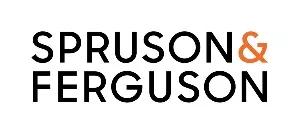- within Intellectual Property topic(s)
- in United Kingdom
- with readers working within the Law Firm industries
- within Intellectual Property topic(s)
- in United Kingdom
- within Privacy and Corporate/Commercial Law topic(s)
- with Senior Company Executives, HR and Finance and Tax Executives
- with readers working within the Banking & Credit, Insurance and Healthcare industries
Aristocrat Technologies Australia Pty Ltd v Commissioner of Patents [2025] FCAFC 131
Key takeaways
- Australia's Full Federal Court has given judgment on the latest in a series of appeals by Aristocrat Technologies Australia Pty Ltd (Aristocrat) concerning the patent-eligibility of computer-implemented inventions (CII) under Australian law.
- The patents at issue in this case relate to an electronic gaming machine (EGM) characterised by the ability to trigger a "feature game" in which prizes are allocated by reference to "configurable symbols" displayed on a player interface.
- In August 2022, Australia's High Court divided evenly on the question of whether Aristocrat's broadest claim was directed to patent-eligible subject matter. That split decision established no binding precedent.
- Ruling on the balance of Aristocrat's claims, the Full Federal Court has now sided with those High Court judges who regarded Aristocrat's EGM to be eligible for patent protection.
- This decision will be welcomed by patent-applicants and owners. However, it remains to be seen whether the Full Court's decision will be challenged on a further appeal to the High Court.
Aristocrat's patent journey
These proceedings concern four innovation patents owned by Aristocrat. In common with previous EGM's, the devices protected by Aristocrat's patents comprise a game controller (consisting of integrated hardware and software) and a player interface (including a video display, speakers, means for receiving and making payments, and buttons for inputting gameplay instructions). By contrast to previous EGMs, Aristocrat's devices are programmed to trigger a "feature game" in specified circumstances. During the feature game, new "configurable symbols" are displayed on the player interface, presenting additional prize opportunities for the player.
The proceedings have a long and complex history. Details are provided in our previous publication. In summary:
- In July 2018, the Commissioner of Patents (Commissioner) rejected Aristocrat's patent applications on the basis that none of them were directed to patentable subject matter, but rather to an abstract idea (gaming rules) implemented in generic computer apparatus.
- In June 2020, the Commissioner's decision was reversed on appeal to the Federal Court. Burley J found that Aristocrat's invention was not an abstract idea, but rather a machine of particular construction yielding a practical and useful result, and thus patent-eligible.
- In November 2021, Burley J's decision was itself reversed on appeal to the Full Federal Court. Applying a two-step test – is the invention computer-implemented; and, if so, does it involve an advance in computer technology? – the Full Court majority answered the first question "yes" and the second "no", finding the subject matter unpatentable.
- A "final" appeal to the High Court of Australia was heard by a reduced bench of six judges in June 2022. The Court was evenly split on the validity of Aristocrat's broadest claims.
- In the High Court, Kiefel CJ, Gageler and Keane JJ characterised Aristocrat's invention as an unpatentable abstract idea involving no contribution to computer technology. By contrast, Gordon, Edelman and Steward JJ characterised the invention as an altered EGM with a new feature game, creating an artificial state of affairs and a useful result, and thus patentable.
- Under the applicable statutory rules, the High Court's 3:3 decision established no binding precedent. Thus, on remitter to consider the balance of Aristocrat's claims, Burley J was bound by the previous Full Federal Court decision to conclude that none of those claims were directed to patent eligible subject matter. An appeal from that decision to (a different) Full Court provided the basis for the most recent decision in this long-running saga.
Latest Aristocrat decision encouraging for CII patentability
Noting that the two-step test applied by the previous Full Federal Court majority had been criticised by all six members of the High Court, the current Full Court concluded that there were compelling reasons why that approach ought not be followed.
Thus freed to consider the patent-eligibility of Aristocrat's remaining claims on their merits, the Full Court expressed a clear preference for the reasoning of those High Court judges (Gordon, Edelman and Steward JJ) who had considered Aristocrat's invention to be patent eligible. Adopting and applying that reasoning, the Full Court found that each of Aristocrat's remaining claims were directed to patent-eligible subject matter, and thus allowed Aristocrat's appeal.
At its centre, the Full Court's decision turned upon the correct approach to characterising the invention disclosed and claimed in Aristocrat's innovation patents. That issue (i.e., the correct approach to characterising computer-implemented inventions) was also central to the disagreement between the two sets of reasons delivered by the High Court in these proceedings.
In the High Court, Kiefel CJ, Gageler and Keane JJ proceeded on the basis that an abstract idea (here, gaming rules) implemented in computer apparatus (here, an EGM) will not constitute patentable subject matter if the mode of implementation is not itself patentable. That led their Honours to inquire whether, leaving aside the rules of the feature game, the remaining elements of Aristocrat's EGM disclosed "any departure from the common general knowledge as to the computerisation of games or gaming". Finding that it did not, they concluded that the claimed subject matter lacked the requisite quality of inventiveness and was not patentable.
By contrast, Gordon, Edelman and Steward JJ emphasised the need to have regard to all integers of Aristocrat's claim – including the non-inventive elements – and to ask whether the claimed invention involved nothing more than manipulation of an abstract idea in a computer (unpatentable) or instead involved the implementation of an abstract idea in a computer to produce an artificial state of affairs and a useful result (patentable).
Finding that Aristocrat's invention fell into the latter category, Gordon, Edelman and Steward JJ observed that the invention related not merely to new gaming rules, but to the implementation of those rules through the interaction of a player interface and game controller involving (among other things) use of configurable symbols. In their Honour's view, the fact that this interaction was achieved via hardware, software and digital images, rather than physical cogs, reels and motors, was immaterial.
While the reasons of Gordon, Edelman and Steward JJ lack binding authority (by reason of the 3:3 High Court split), those reasons have now been adopted and endorsed by a unanimous Full Federal Court and are therefore binding on the Commissioner and on single judges of the Federal Court. There is much in those reasons to encourage those seeking patent protection in Australia for computer-implemented inventions.
It remains to be seen whether the Commissioner will seek leave to appeal from the latest decision of the Full Federal Court to the High Court. That may turn upon whether the Commissioner is satisfied that the Full Court's latest decision provides sufficient clarity for patent examiners in analogous cases.
Spruson & Ferguson will continue to monitor and report on developments in this important case.
Assistance securing CII inventions
If your innovations are in the field of computer-implemented inventions, Australian patent law can be a grey area. Our patent attorney teams as well as our Spruson & Ferguson Lawyers are well versed in this area and can advise and assist you in seeking protection. Reach out to the authors or, for filing assistance, get in touch with Ayesha Lee for a confidential discussion of your needs.
The content of this article is intended to provide a general guide to the subject matter. Specialist advice should be sought about your specific circumstances.



